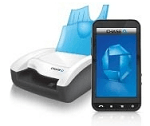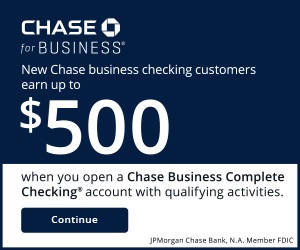 Being a business owner is a stressful and strenuous job in itself and that’s before we even get into the financial management of your profits. If you are looking into opening a Chase Business Checking account, there are a few things to consider before you get started.
Being a business owner is a stressful and strenuous job in itself and that’s before we even get into the financial management of your profits. If you are looking into opening a Chase Business Checking account, there are a few things to consider before you get started.
It might be better for you in the long run to come prepared rather than scrambling through certain documents and necessary credentials. Whether you are a business novice or expert, we want your transition to a business account be as smooth as possible to better kickstart your business banking journey.
Here are the Requirements to Open a Chase Business Checking Account you might want to keep note of for your convenience. You might even find other great promotions along the way such as their current Chase Business Account offers!
What You Need
Business accounts will often require that you submit a document outlining your required documentation. Whether you are a Sole Proprietorship, Partnership, Limited Liability Company LLC, or Corporation, make sure you complete the appropriate form for your business. Keep note that each type of business is subject to different additional documentation .
For any unincorporated associations or organizations (not including non-profit corporations) you are also required to have the following:
- Organizational Document: where the members agree to form an organization and set out the governing structure of the organization
- Employer Identification Number (EIN)
- Chase requires the Secretary to be present to open a new account
The following information is required to open the account:
Form of Identification: Two forms of ID are required and one must be a government issued ID.
- A driver’s license or passport should suffice as primary forms of ID. Non U.S. Citizens may use their passports.
- Some secondary forms would be a Credit/Debit Card with embossed name, employer ID, or a utility bill.
Tax Identification Number: An Employer Identification number is required.
- Single Member LLCs may use their Social Security Number (SSN) or Individual Taxpayer Identification Number (ITIN).
- Non U.S. Citizens may use their ITIN.
Business Documentation: Varies based on the State of Organization.
- Certified Articles of Organization (Certificate of Formation) – filed with state agency
- Website Validation
- Assumed Name Certificate
Assumed Name Certificate: May be required if your business is operating with a DBA (doing business as).
- For example: Jones Paint Supply LLC DBA Jones Professional Painting LLC
- Not required in AK, AL, HI, KS, MD, ME, MS, NM, SC, TN, WI, & WY
- An assumed name certificate may also be referred to as: Trade Name Certificate, Fictitious Business Name Statement, or DBA
If your business is organized in another state, but operates in the state where the account is being opened, then documentation from both states is required.
- Business Documentation from the state the business is organized in.
- Foreign Registration or Certification from the state the account is being opened in.
The following documentation may be requested up account opening:
Supplemental Documentation listing the current members or managers of the LLC (one of the following):
- Certified amendment to the Articles of Organization or Certificate of Formation
- Operating Aggreement
- Letter on Company letter head
- Meeting Minutes
- Annual Report or Statement of Information
Business Information: Information about your business may be requested so it may be beneficial to keep them in hand just in case.
- Business address, phone number, number of business locations, where products and services are sold, locations of suppliers and vendors, the nature of your business, annual sales, number of employees, types of transactions and volumes you expect to process through the new account.
Limited Access to Employees: If you are looking to provide limited access to authorized employees (nonsigners) to transact on behalf of your business using an employee card, then you may need to have the following:
- Full name as it appears on the employee’s Government issued ID
- Employee’s residential address
- Employee’s date of birth
Once you have everything and are ready to apply, call or visit your local Chase branch for an appointment. Upon meeting a business banker, you will then choose which account is right for you and begin depositing funds into the account.
Enroll in Services
 Once you have opened the account, you can begin to enroll in Chase Online for Business and download the Chase Mobile® app. These are useful tools to help you manage your finances with ease through the convenience of online and mobile access. Enrolling in these services will allow you to:
Once you have opened the account, you can begin to enroll in Chase Online for Business and download the Chase Mobile® app. These are useful tools to help you manage your finances with ease through the convenience of online and mobile access. Enrolling in these services will allow you to:
- Print out your online bill payment payees from your former bank and enter the payees on Chase.com
- Enroll in services such as Chase QuickDepositSM to deposit checks anytime, anywhere and protect your account with alerts and fraud protection services.
- Activate Access Manager if you would like to designate sub users to view and/or transact online on behalf of the business.
Transfer Your Payments and Deposits
 After you open a new Chase Business Complete Checking account you can transfer automatic payments by:
After you open a new Chase Business Complete Checking account you can transfer automatic payments by:
- Make sure to contact your payroll provider and other companies or organizations that accept automatic payments from your account. You will need to provide your new account number and routing number or business debit card information.
- Ensure that proper funds are deposited to your account prior to any payment dates.
- Contact your merchant services processor or other regular depositors and provide your new account number and routing number.
If a written notification is required, complete the appropriate forms to provide to the company or organization.
Closing Your Old Account
To finalize making the switch over to Chase, you need to close your old account. Just make sure that All outstanding checks have been cleared, all automatic payments and deposits have moved to Chase, and all ATM/Debit Card transactions have cleared. Also, reconcile your account and keep it open until you can determine the final balance. After everything is settled, contact the bank to complete any final forms and close your account.
Key Features
After you open your Chase business checking account, you may begin to take charge and take advantage of many of their products and services.

 Surcharge-Free Transactions: The account allows you up to 100 free transactions per month without any fees! The transactions includes unlimited electronic deposits but excludes wires.
Surcharge-Free Transactions: The account allows you up to 100 free transactions per month without any fees! The transactions includes unlimited electronic deposits but excludes wires.- $5,000 in Cash Deposits: Each month without a fee. Chase also offers ChaseQuickDeposit to provide you with the flexibility and convenience of depositing check whenever and where ever you are!
 Wires: The account allows incoming and outgoing domestic and international wires in U.S. dollars or foreign currency for greater control and payment accuracy. The global transaction capabilities of Chase allows you to send payments in over 35 currencies worldwide!
Wires: The account allows incoming and outgoing domestic and international wires in U.S. dollars or foreign currency for greater control and payment accuracy. The global transaction capabilities of Chase allows you to send payments in over 35 currencies worldwide!
 |
 |
Bottom Line
Growing a business is not an easy task so why not start by opening a business checking account. The account is designed for your convenience to manage your cash flow on the go.
There are some extensive checking account requirements but with Chase’s guide you don’t have to worry about not having the proper credentials to open the account.
Running your business with Chase will be worthwhile so take serious consideration if you are thinking about switching to Chase. If you would like to see more from Chase, check out our updated list of Chase Bank Promotions!





Leave a Reply